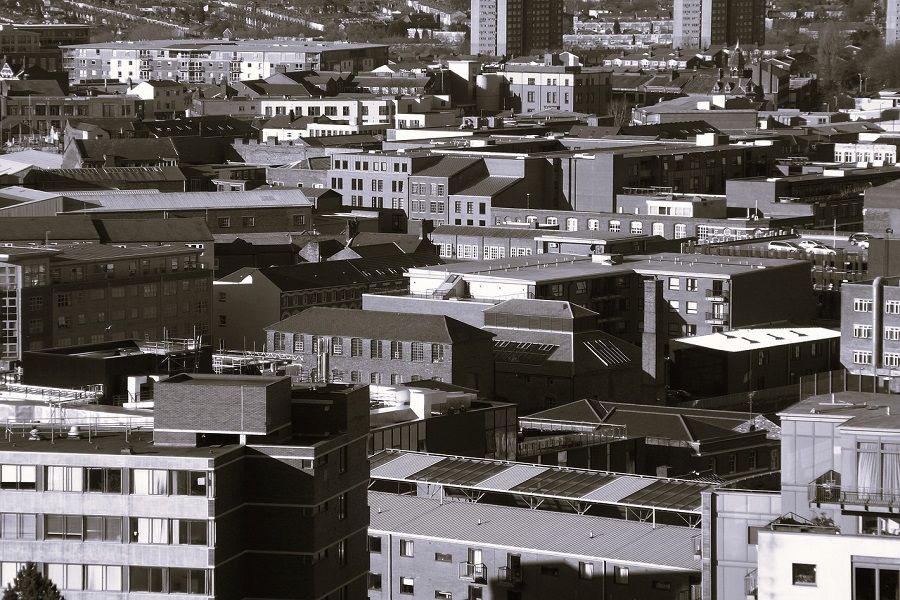Despite what the headlines might sometimes suggest, the housing crisis is not one, uniform problem faced by the whole nation, but rather a series of local and very different crises. The ratio between average house prices and average yearly earnings, for example, varies wildly across the country. In Kensington and Chelsea, the median person would have to work for over 30 years to pay off the average home there, as compared to fewer than 4 in County Durham. And while there are many exceptions – not least of all tourist hotspots – often the housing crisis is at its worst in urban areas; most notably London, but also Surrey, where almost 90% of people live in urban areas, but the average home is over 12 times the average earnings.
This cannot be alleviated unless we build more homes; however, building homes in urban areas presents unique challenges. They are densely populated and short on land supply. Room size in the UK has already shrunk by over 30% since the 1970s, and houses in England are some of the smallest in Europe. But ingenious ideas can go some of the way to mending this.
One has been advocated for by John Penrose MP. Applauding “Street Votes” – a policy to allow neighbourhoods to create their own development codes according to which one can modify their home without needing any further planning permissions – he suggests going further, an idea he dubs “Build Up Not Out.” It would mean anybody who owns an urban home could redevelop it, provided they follow their local council’s design code. Heritage buildings would be exempt, and the new buildings would have to satisfy all the right building safety regulations; but otherwise, one could start building straight away. And while Britons normally do not look favourably on tall buildings, democratic control over the design code would ensure that redevelopments are not towering eyesores.
Still, redeveloping existing homes will not suffice – new homes must be built. Urban areas are largely dependent on brownfield land available for development. And, as much as freeing up green belt land for development would provide cheap land for a vast number of homes, it is brownfield land that is closest to relevant infrastructure, urban centres and work placements.
But brownfield land is expensive and difficult to build on. In Hertfordshire, a hectare of greenfield land costs around £20,000 on average, as compared to around £400,000 for brownfield land. This is not just the result of brownfield’s favourable location near convenient infrastructure, but also due to costs related with previous use, such as fixing soil damage. To make brownfield development more viable, Jo Gideon MP suggests the creation of a specialist national organisation, akin to the now-dissolved English Partnerships, that could advise on how to repair brownfield land for development.
The importance of ideas like this should not be understated. In urban areas, the housing crisis not only results in unaffordable homes and the host of economic problems this fosters, but also maligned incentives. In a bid to reduce development costs and maximise profits when creating affordable housing, developers have ended up building unsafe tower blocks in urban areas, culminating in the Grenfell Tower disaster on the 14th of June 2017. Lord Greenhalgh highlights that it was the largest loss of life in Britain from a residential fire since the Second World War. 72 people died and 70 more were injured.
Since then, however, the Government has been cracking down on unsafe development. The Building Safety Act was passed in April 2022, featuring a host of encouraging measures, and the Rt Hon Michael Gove MP has ordered developers, on the threat of barring them from continuing to build new developments, to pay for remediation measures on blocks that have been found to have serious fire safety defects.
But the most visible cost of the housing crisis in urban areas is homelessness. Rough sleepers can still be arrested under the Vagrancy Act for continuing to sleep on the streets despite having been offered “alternative accommodation.” This “alternative” is often not a real one; when I worked with the Companions of Malta, rough sleepers often told me that they chose not to stay at the homeless shelter because of the reprehensible conditions there, including violence and antisocial behaviour. As a rough sleeper in the UK, each year, you have a roughly 20% chance to die on the street, and your life is not made any easier by the ever-present anti-homeless architecture, such as uncomfortable benches or spikes under overhangs. Nobody in those conditions would refuse shelter unless they had a very strong reason to. Bob Blackman MP writes about the measures the Government has taken to help alleviate
homelessness and, rightly, lauds their commitment to end rough sleeping in England by 2024, but the number of rough sleepers is still increasing: more still needs to be done. Most of all, we need more affordable homes.
This article is a companion piece to the Home Advantage essay collection by Bright Blue.








